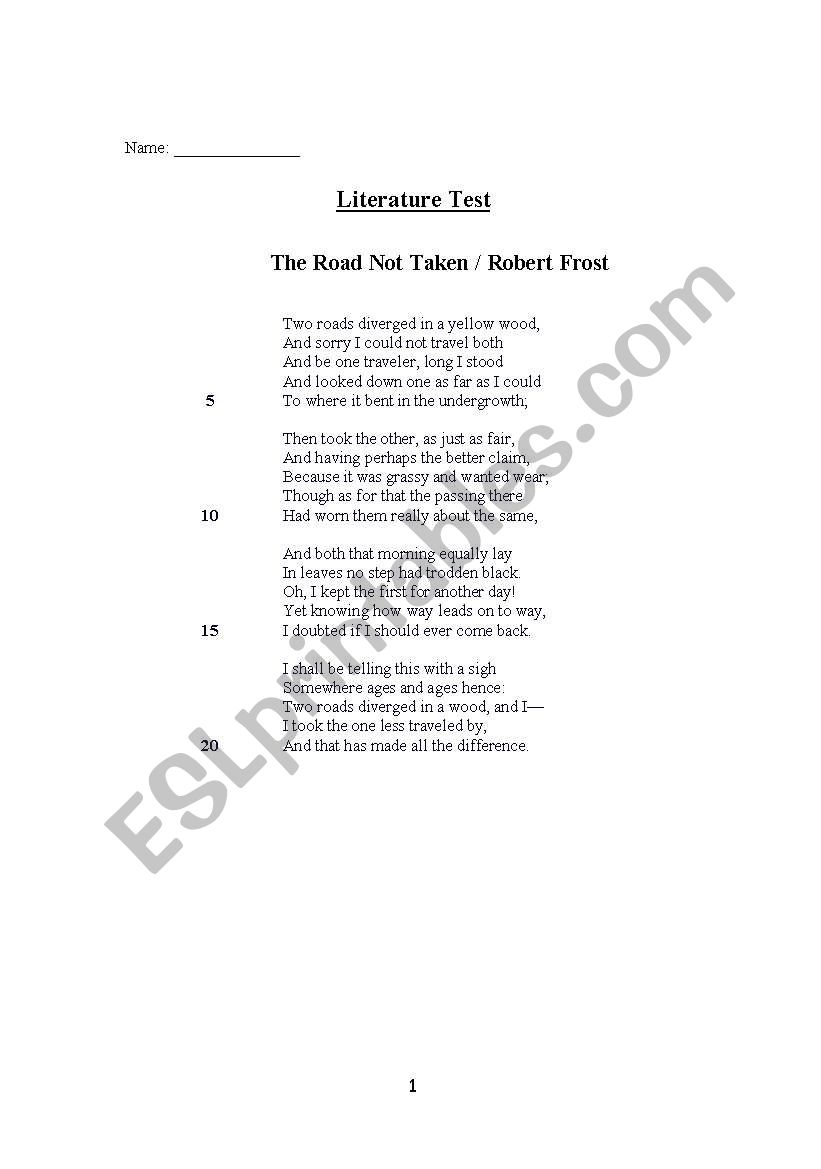


(i) There is no difference in the roads as the poet describes them in stanzas two and three except that the road he took was covered with grass looked to be not much used. Is there any difference between the two roads as the poet describes them Through this phrase, the poet refers to the fact that one road always leads on to another and so on.ģ.It implies that the leaves lying on the road had not been crushed under the feet of the travellers.It implies the use of the path by passersby.It seemed to invite people to tread on it.
#Road not taken questions full
The road was full of grass and very few people had used it.Yellow woods refers to the forest in the autumn season.The problem that he faces is that he cannot decide which road to take to continue his journey.Ģ.

Where does the traveler find himself? What problem does he face?Īnswer: The traveler finds himself in the yellow woods at a point where the two roads diverge. The Road Not Taken Questions and Answers PDFġ. Here we have collected some of the important Questions and Answers from The Road Not Taken. The Road Not Taken was originally published in 1915 and then later it is also published as the first poem in the collection Mountain Interval in 1996. This beautiful poem is written by Robert Frost who was a famous American Poet. The Road Not Taken is one of the popular narrative poems which is a part of various academic courses also.
#Road not taken questions pdf
and smile.) I share my own example of having to make a choice of what path to take -college or job -and how it affected my life and caused some hardships but turned out to be the best decision.The Road Not Taken Questions and Answers PDF Summaryĭear readers, here we are offering The Road Not Taken Questions and Answers PDF to all of you. I just say that he had to make a decision where to go and what to do next. (There is always one student with a story about his or her dad getting lost while driving somewhere. I ask them to share choices they have had to make. I end by asking students to take the words and connect them to their own lives to make the poem more meaningful. I encourage deeper thinking through higher level and open-ended questioning. I like to reread each stanza and ask students to think about and respond to what the author means in each line. This may end up being a drawn out discussion, but since it’s the last lesson in the unit, I want to make sure that students have time to process the information. "Do you think the speaker wanted to go back and take the other path? Why do you think this - proof in the poem?" "How old is the speaker when he is talking to us in the poem?" "Why might someone want to do something others had not done?" "Why do you think the speaker chose the road he took?" "What is the author thinking/doing when he looks at the roads? How do we know this?" "What time of year is it? How do we know this?" "What is the author trying to say to the readers in the first stanza?" "What did the speaker do in respect to the road he didn’t take? How did you infer that?" "What is the speaker doing in this poem?" I begin reading the poem, modeling inflection and pausing as needed to help with understanding. For the first reading, I read very slowly.Īfter finishing the poem, I ask students to think through what they have heard and consider what may be some big ideas the author is trying to convey? I ask questions about each stanza and take responses from students. I also suggest that they write questions and inferences in the margins and underline words or phrases they don’t understand. I distribute copies of the poem and tell students that, as they listen to me read it the first time through, they should try to create visual pictures from the words to help them understand what the author is saying.


 0 kommentar(er)
0 kommentar(er)
